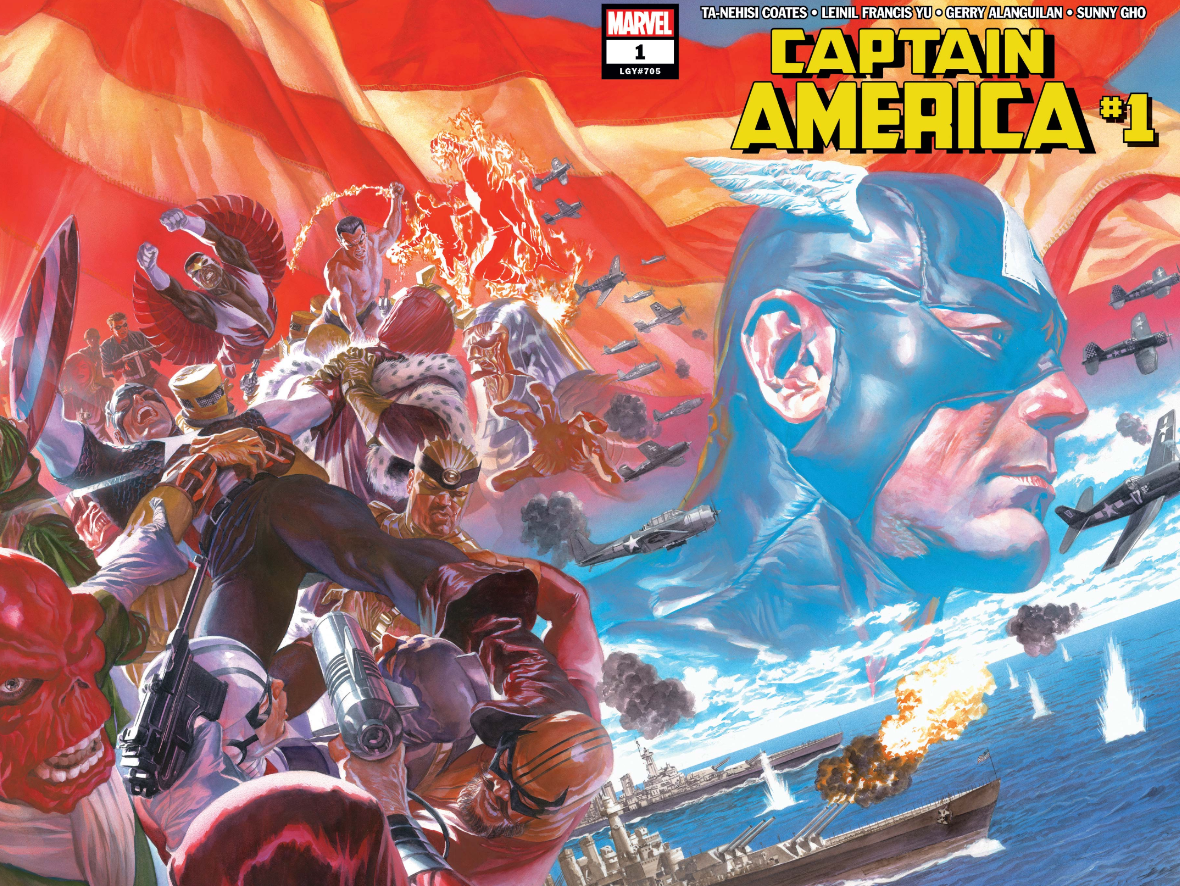
“I’m loyal to nothing, General—except the dream.”
—Captain America in Daredevil #233 by Frank Miller
“The dream is old. Older than Captain America. And the dream is what matters. Even if the shield is tarnished, even if Captain America is tarnished … the dream is eternal.”
—Daughter of Liberty “Hera,” Sharon Carter, in Captain America #12 by Ta-Nehisi Coates
With Captain America #30 out now, Ta-Nehisi Coates, one of our all too few critical public intellectuals in the 21st-century United States, the Star-Spangled Avenger sees his most meaningful and entertaining era since Ed Brubaker and Steve Epting arrive at a conclusion that feels both classic yet timely. This comes as no surprise to readers who have followed the series over the past three tumultuous years, since July 4, 2018; throughout the run, Coates’ taut storytelling and clear meditative narration struck a fine balance between inspiring hopefulness and sobering clarity.
Coates’ Cap run is a single narrative, an impressively taut thriller composed of several tight mini narratives building to an 11-issue multi-climax arc. The thematic and narrative consistency is refreshing, especially for a Marvel title. But the pandemic, of course, knocked everything sideways, and there was a five-month gap after issue #20. And in 2021, there were gaps in January, April, and June. Already, this is a book meant to be read in one or two sittings, which, as of July 7th, fans can now enjoy doing. And two back-to-back reads are recommended to really sink into this epic—because while the action flows relentlessly, there is so much going on between Steve and Sharon’s respective narrations and the loving and knowing use Coates makes of classic characters and continuity.
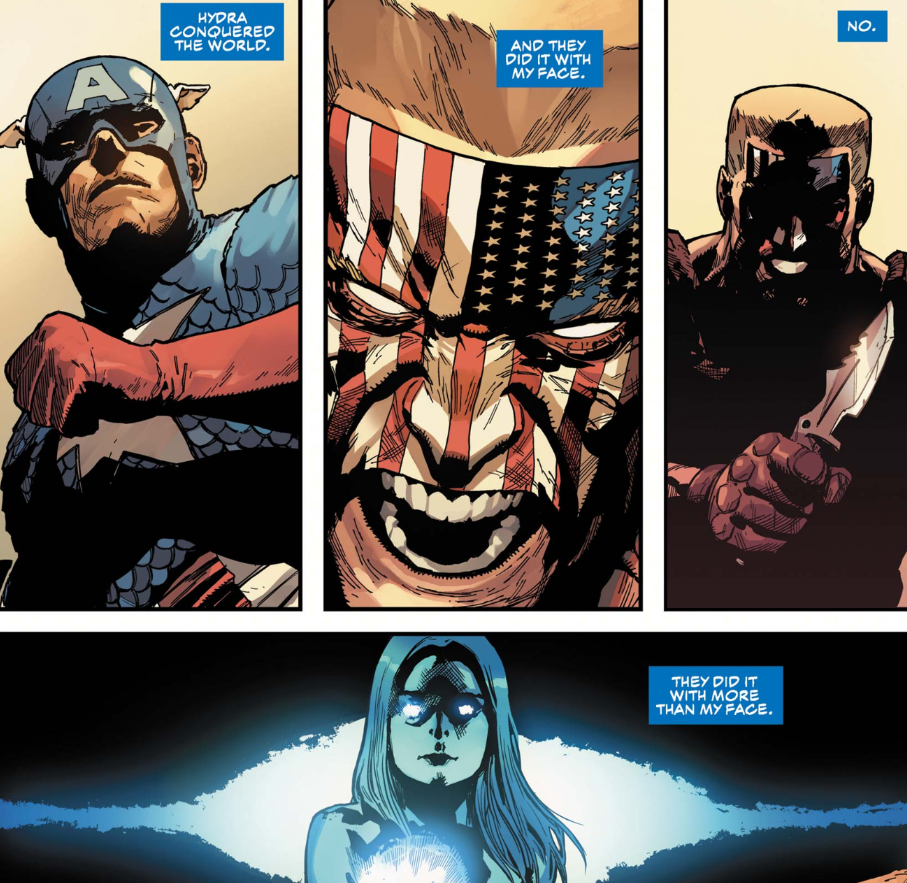
At the same time, and entirely out of keeping with standard Marvel storytelling practice, Coates ably works with a bare minimum of fuss and no info-dumps to tie up his predecessor’s loose threads or at least articulating problems the previous Cap writer left (perhaps unwittingly; like why an aged Cap was tempted by Kobik in the first place). Most importantly, Coates addresses Hydra’s seduction of small-town America, which both Nick Spencer and classic but merely stopgap writer Mark Waid avoided. Readers familiar with the Spencer era (2016-2017) all get that it reflected its contemporary moment in American society and politics. But in many respects, Spencer’s reach exceeded his grasp, glaringly at times. Refreshingly, Coates, with his unfussy, frank, and straightforward storytelling, does not have that problem. After all, he’s had years to prepare for this story of America’s iconic conflicted super-patriot.
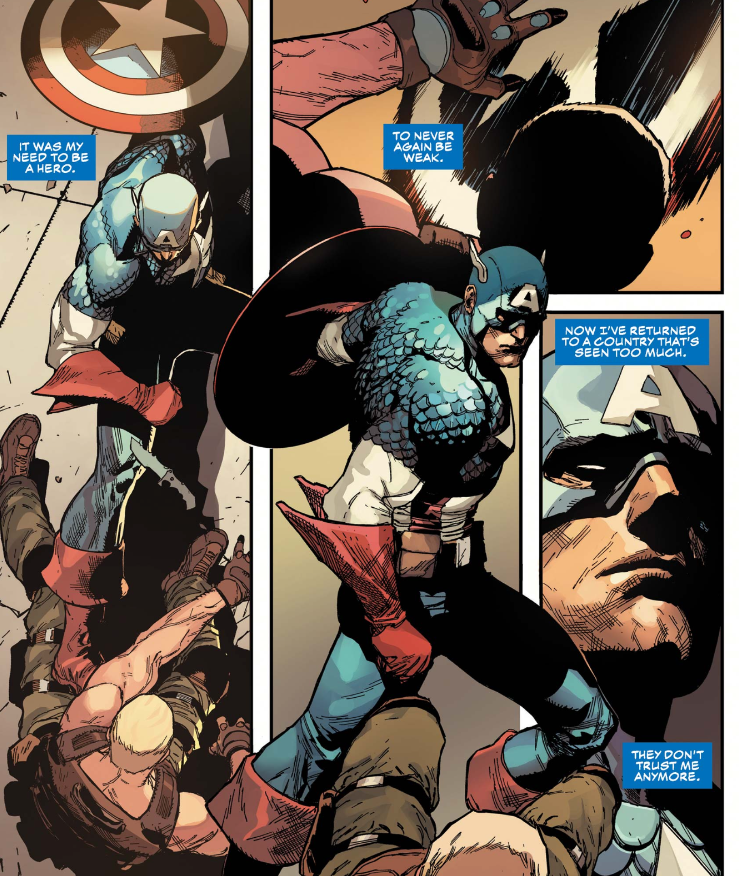

Ta-Nehisi Coates came to prominence as a national correspondent for The Atlantic, from 2008 to 2018, leaving to meditate on the next phase of his writing career and personal life—just after the release, incidentally, of Captain America #1 (vol9). He’s also written for a number of major print-news venues and has published three books of nonfiction—a memoir, a history of race in America framed autobiographically (a National Book Award recipient), and a collection of his Atlantic essays—which altogether made it clear that he stands with two of the great political essayists of the 20th century: James Baldwin and George Orwell. Two years before taking on Cap, Coates had already started an acclaimed Black Panther run, which concluded in May 2021. During that time, Coates turned NYT-bestselling debut novelist as well. (His novel, The Water Dancer, is set in the antebellum South and stars an escaped slave who meets Harriet Tubman and joins the Underground Railroad.)
And now that his time on Cap has come to a satisfying conclusion, readers can take in the entire run—without paying any mind to all the bad-faith alt-right social media trolling Coates’ fearlessness stirred up among the willfully ignorant—and enjoy it as an admirably although only mostly seamless whole that held up across three tumultuous years in the real world, including the near-cratering of the world economy. Geographically, Coates’ narrative jumps around quite a bit, but read straight through it couldn’t be clearer that with impressive economy Coates has wrought a powerful mosaic of our modern culture and politics—weaving an American quilt that provides no easy comfort, but hope for those who need it, which is all of us these days. Pre-pandemic, ours was an already fraying social fabric subtly tainted over the past two decades by the corrosive influence of state-sponsored crypto-fascism from Russian thugs and trolls. Of course, Russia’s elite criminals quickly spread out across the world after the collapse of the Soviet Union, now living in the kind of luxury that’s almost nonexistent in Russia itself. So Coates’ brief foray into Madripoor, Marvel’s favorite den of sordid lawlessness and cynical moneyed hedonism, makes perfect symbolic sense from that vantage, with the erstwhile Soviet oligarch turned bloodthirsty Nazi enjoying the luxuriousness of the Trumpian-styled Monarch Hotel.
From domestic terror in D.C. and the legacy of crypto-fascism in the heartland to a private-prison fiefdom and late-night NYC spy games, followed by militias terrorizing and trafficking migrants at the border (already a hotspot for fascist violence during Spencer’s run) and the new Scourge’s cop killings in the City—with a stirring moment outside a halfway house in the Bronx—the story arrives in a small Midwestern town for its first climax—Sharon Carter’s decades-overdue sublime moment. Then there’s a kind of mini-climax, in Madripoor, which gets General Ross back in the game as Big Red. It’s perhaps too brief, an interlude almost, but it’s also the series’ real pivot—blowing open the elite conspiracy to frame Cap for murder. Finally, the last four issues return to Manhattan, where the Skull goes for broke with a last zero-sum move, really one of his classic M.O.s: mystically-powered hate bombs across many of America’s larger cities. Unexpectedly, the closing issue does not close out the action with a violent spectacle. Instead, we see a war of ideas around an unwelcoming dinner table, with the Skull’s universally demeaning verbal barrage sabotaging his online project of spreading manufactured desperation and hatred.
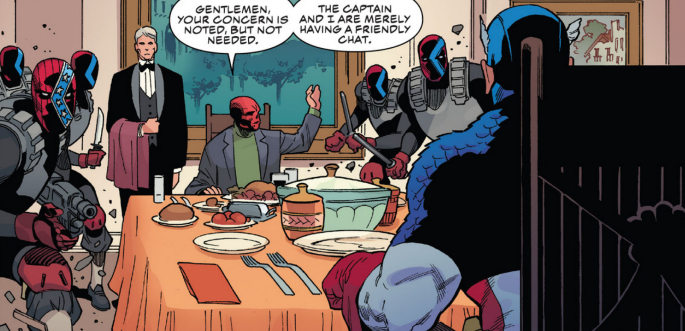
At the close, with the villain in the wind and Coates’ brilliant creation of the Daughters of Liberty prepared for further Cap-related adventures, Coates leaves the door open for the future Cap and Cap-adjacent writers to take off running. Again, the contrast with Spencer’s run couldn’t be clearer. Cap’s title has been left with serious momentum behind it now, a great time for new talent to come on board.
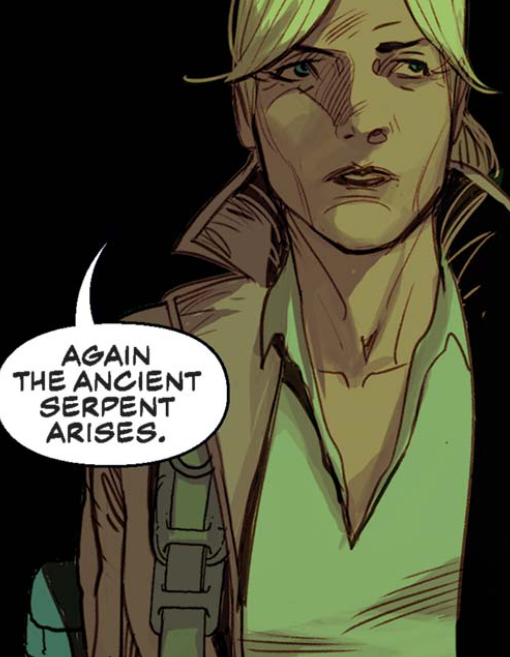
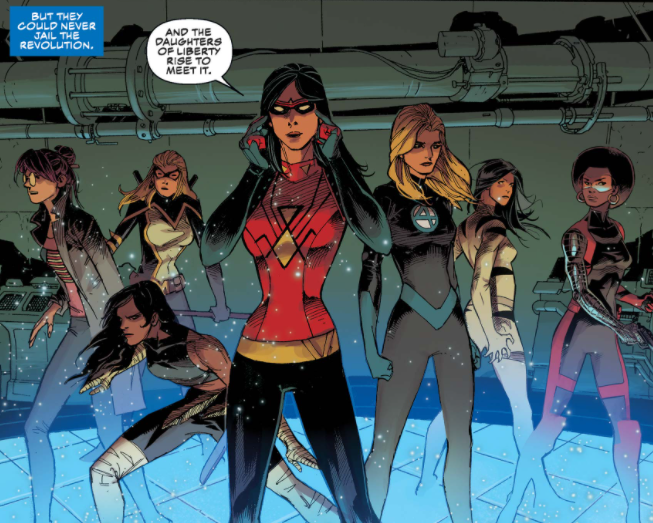
Before getting back to the substantive heart of Coates’ run, let’s take a look at his unique narrative structure. Each smaller arc is quite decompressed, unfolding cinematically, a page or three of intense dialogue tinged with political dread punctuated by uncluttered pages of balletic action. With the opening year’s six-issue arcs each drawn by one artist (Leinil Francis Yu and Adam Kubert) and focused on a distinct pair of nemeses and venues, Coates laid the critical groundwork for the rest to follow.
But even while the follow-up third arc, “The Legend of Steve,” saw one too many guest artists, it was by far my favorite, bringing together Cap and the Daughters for the most compelling and sophisticated teamwork ever seen in a Cap’s solo title. The foes are classic terrors of the 1980s: the Watchdog militia and Scourge; and the heroes are mostly women finally getting their due. And all that’s gone before feeds right into the final rush of events, from Selene’s defeat, Sharon’s rebirth, Ross’ return, and the subsequent clearing of Steve’s name—to Alexa Lukin’s assassination, the reawakening of Sin’s original psionic powers as Mother Superior (in the classic ’80s J.M. DeMatteis era), her father’s fall from cult-guru status, and his impotent retreat, now under his daughter’s vindictive thumb.
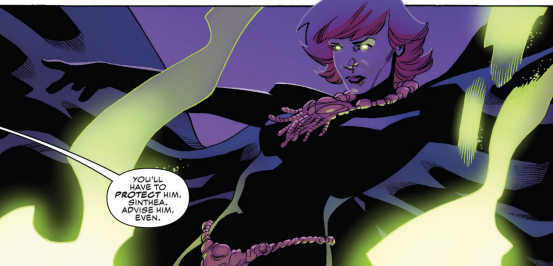
Still, the Madripoor interlude would have benefited from just one more issue in that two-issue sequence. There was some buildup previously there, but it’s all so briefly conveyed relative to the other venues. Similarly, another chapter detailing the Skull’s burgeoning online following would’ve made the last mini-arc hit home with greater clarity and impact, especially Coates’ hilarious and on-point trolling of “Dr.” Peterson. However, I don’t know if there were additional problems with wrapping up the run, beyond the mere fact of a devastating pandemic. Most the news around Coates on Cap has been driven by alt-right trolls and standard-issue racists, so there’s a lot of toxic media to wade through and little substance to be found—unsurprisingly.
Another indication that things didn’t go entirely to plan is the most glaring dangling thread: U.S. Agent encouraging the widow of a respected cop to take up the Scourge mantle at the end of that arc. Meanwhile, veteran Marvel author Christopher Priest is three issues into a fascinating new U.S. Agent series, without a Scourge in sight, not even a mention. What happened? We’ll probably never know, and that’s just something comics fans have to expect with even the best of runs, no matter the situation; there are always forever-unexplained loose ends.
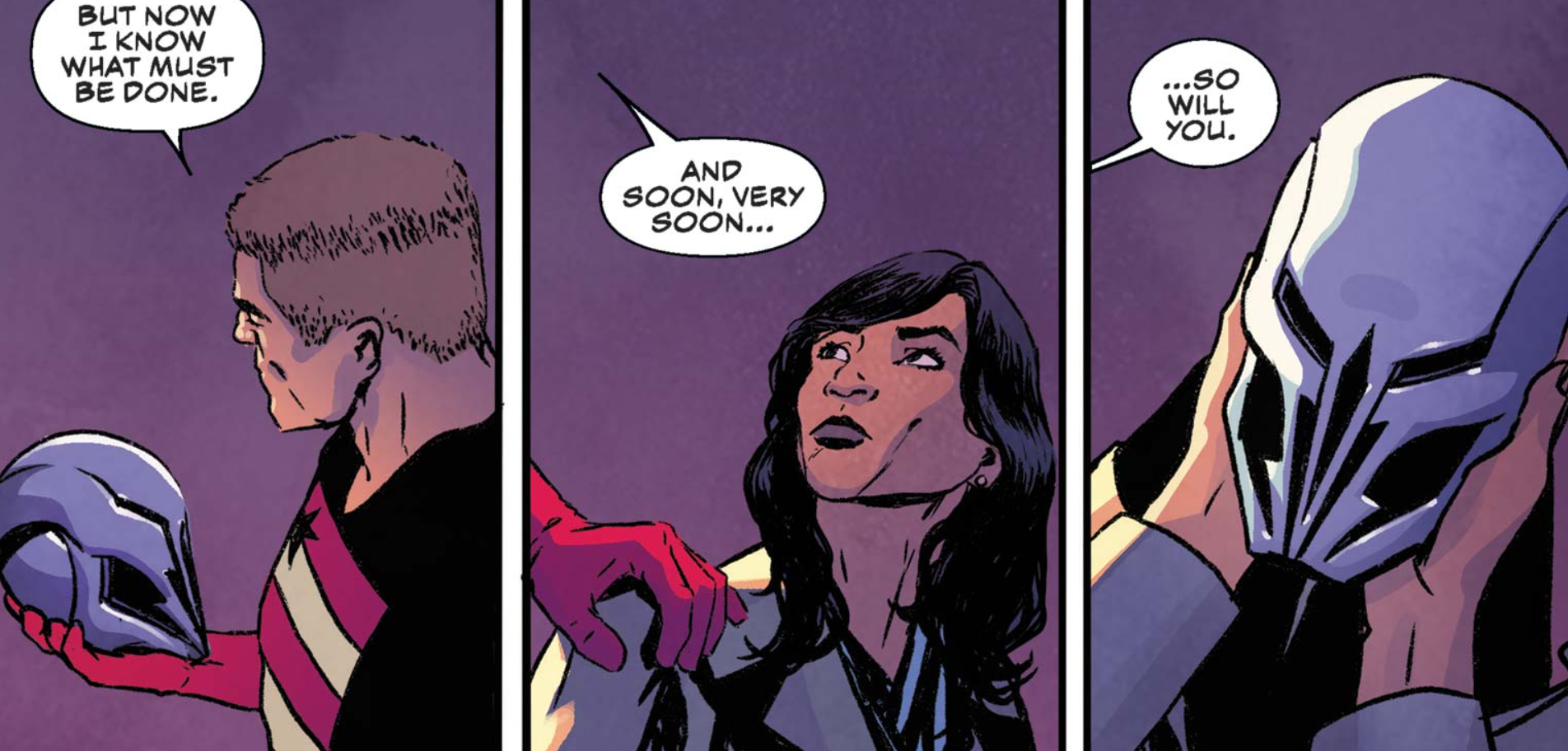
Regardless, it’s fascinating that throughout his run, Coates introduces only one new character, Alexa Lukin—although she’s the wife of an old foe, the oldest as it turns out, and she’s actually at least as old as Cap and the Skull, if not significantly older. Meanwhile, Coates’ Cap is classic Cap, and of course wholly unlike Nick Spencer’s (whose Hydra Cap here at last meets his grisly end). The super-powered cast are all recognizable from Cap’s past—and revered Marvel heroines in the case of the Daughters of Liberty, a group of badass women who should definitely get their own series—these ladies certainly have more to offer than many a super-team.
It’s as if this modern era of Cap simply (and challengingly) refracts what’s always already been there, warping nothing out of true—like Spencer had—but rather distilling the spirit of these heroes and villains working, respectively, to nobly come to terms and grapple with our rapidly changing society or to further diabolically derange the increasingly deranged reactionary forces trying to curtail the more positive changes in America’s social fabric. (Also, choosing Rasputin as Alexa’s mentor was brilliant, implicitly connecting that historic charlatan and faux mystic feeding off the insecurities of the elites with modern bizarros like Jordan Peterson—who incidentally doesn’t look too unlike Aleksander Lukin.)
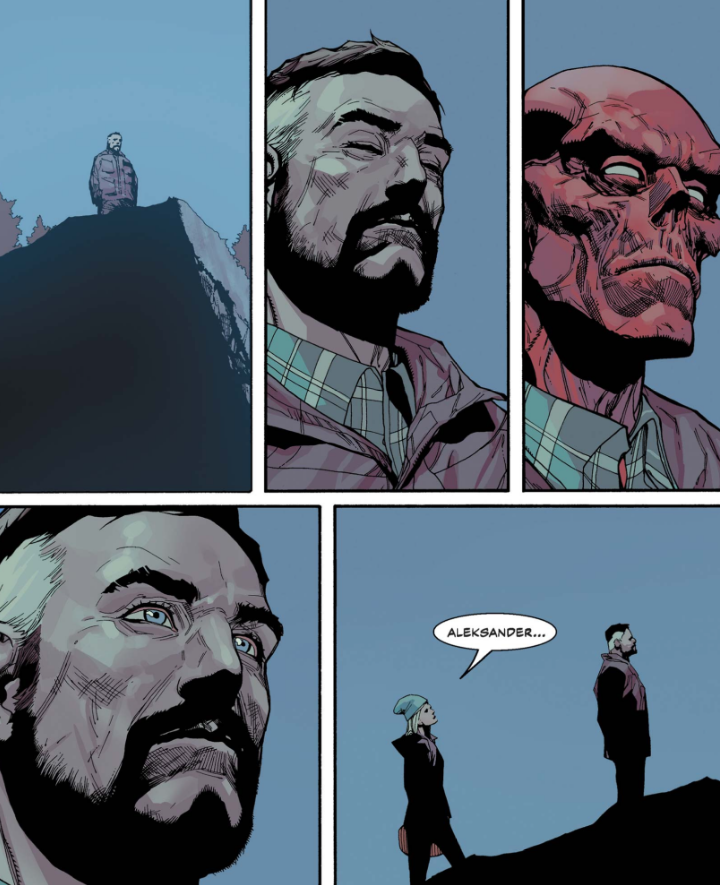
Again, this is the opposite of Spencer’s run, which heightened that derangement, amping it up—without looking more challengingly at American society’s perennial ills that were already increasingly unignorable for anyone not burying their head in the sand. If Spencer was excess, Coates was a lean and relentless return to form at just the right time as America’s entertainment and media are just barely beginning to grapple explicitly with their firm foundations in systems of white power, long unacknowledged by those at the top—for this willful ignorance has had a toxic, trickledown influence on consumers and creators for generations. Meanwhile, most Americans have largely been unaware of the poison they were consuming—in the way America has for centuries framed its narratives of itself, of the world, and of reality, of what was acceptable and of what was intolerable—though those not tolerated by mainstream society were never unaware, unblessed (or uncursed) by the privilege of blissful wishful unknowing.
Before diving into Coates’ sly, dead-on critique of the (unaware) crypto-fascism of pigheaded sophists like Jordan Peterson, let’s recall that it doesn’t come out of nowhere. Forget the Peterson controversy for now. Coates has been deconstructing white power and privilege for years, and it’s all laid out with maximum economy and efficiency in the first half of his Cap run long before issue #28’s immediately notorious callout of the mass-cult guru. Anyone aware of this unfortunate real-word boob or the wasteland of alt-right media more generally can easily see Coates mapping out this toxic discourse of fear and willful ignorance before any direct allusion to Peterson’s “program,” which was just one among several allusions to the radical right.
Readers were exposed most directly to fascist thinking as the Dryad studied Strucker’s “mind-map”—unfiltered thoughts seemingly downloaded in blog format. While Steve and the Daughters are there to counter this zero-sum demagoguery, on-page it’s offered up without apology or much in-universe pushback, except from our small group of heroes, a sign of how serious this zombie-like threat is to a country never far from a past whose existence the elite and the powerful deny, while the rest of us parrot their talking points (i.e., their prepackaged, easily digestible grievances, the media-fueled WMDs of the right’s culture wars).
Now, in the instance of readers reading Strucker’s thoughts, we’re simply reading over Peggy’s shoulder, and we have no idea what she’s thinking. Coates is allowing the reader to figure things out for themselves—far more than could be said for right-wing bobble heads who have successfully framed every discussion about politics and society at large since forever ago.
However, reading closely the Echo- and White Tiger-centric issue #14, you’ll find Coates, through Cap, making clear the exclusionary connection between the white isolationist cultures of preppers, incels, and standard-issue misogynistic machismos—all callously childish “man-babies.” This chapter also brings Sin into direct and bruising contact with the Daughters, presaging Coates’ later elevation of the Skull’s own daughter as Cap and co.’s new prime villain, a lifelong victim taking what she’s come to believe is her due by right and by might: her father’s mismanaged power. Of course, she’ll remain stuck in his psychology of fear and rage, even if she’s in charge of him, while he succumbs to existential or spiritual dysphoria.
So, really the direct Peterson allusion in issue #28 is part of that chapter’s darkly funny punchline, revealing what the keen-eyed reader already understands but manifesting that understanding in a real-world threat to sanity and progress—self-serving elitist Jordan Peterson’s bizarro mysticism and barbarian mishmash of myth-mongering, which whether he knows it or not, feels like déjà vu to anyone who’s studied the rise of willful reactionary ignorance across the West in the early twentieth century—yes, including in the US. Fascism rose out of nationalistic and anti-science undercurrents that seized their moment as the forces behind global capital sacrificed the well-being of millions in an entirely predictable stock-market meltdown. And it could as ever easily happen again—and here. In some areas of America it already has, long ago; outside forces like Hydra would be redundant.
And Coates makes that point early: The invaders were liberators and provided the welfare that elite Americans rejected from the US government decades back, when minorities sought to gain the goods and services their tax dollars had been helping pay for all along. (That wholesale rejection of federal largesse—of the symbol of our legendary American prosperity achieved by all America’s workers—is the zero-sum logic of white power at work.)
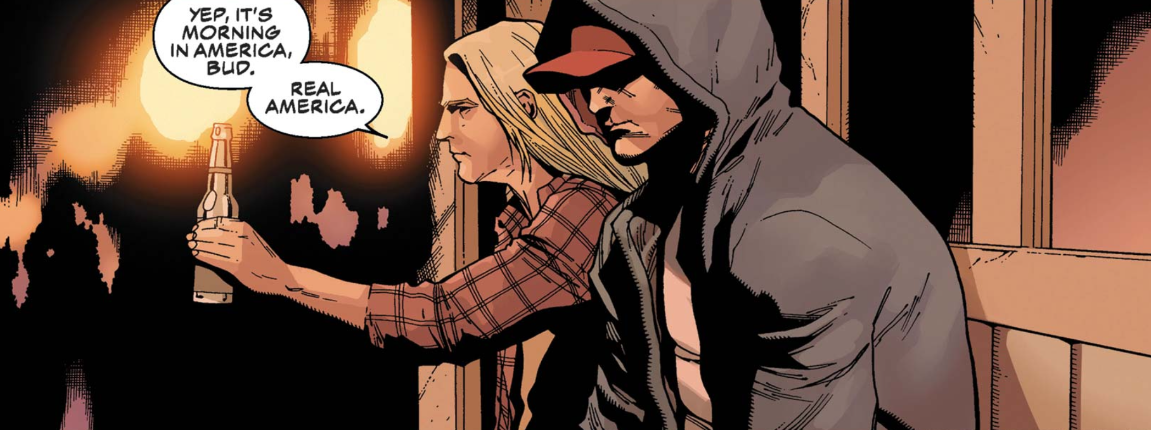
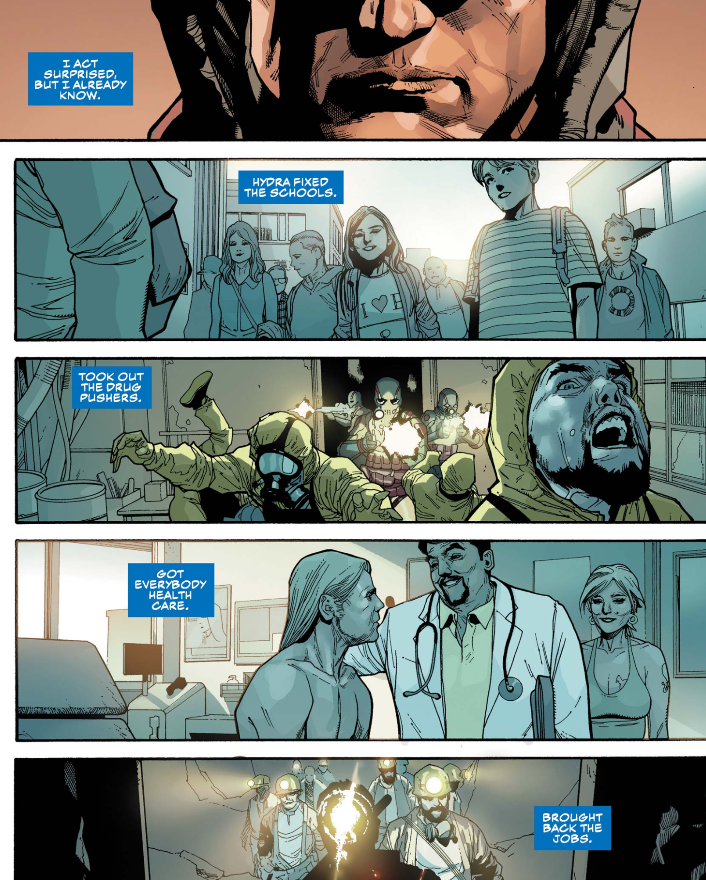
What much of the social media blowup over the Skull/Peterson comparison missed was that Coates was never equating Peterson with the Nazi Skull. The Skull’s own online presence was depicted as feeding different narratives to his followers, only one of which was a direct Peterson allusion; the other allusions were to a variety of fascist or fascist-adjacent ideations. In other words, it’s not that Peterson is a Nazi; rather the Skull’s symbolic nature refracts a spectrum of toxic aspects to our society, of which Peterson is actually victim, just as all bigots and chauvinists poison the well for themselves and everyone else. The world, knowing too much of this unfortunate man and his personal issues already (given that Peterson’s public life has been a projection of his insecurities), now knows that he suffers from addiction, the very thing for which he’s so harshly judged others deemed as lesser than he or lost when he believed himself a leading light. All this—including his misogyny, unthinking Eurocentric chauvinism, and woefully uninformed political opinions—makes turning him into a role model extremely treacherous.
But that’s exactly Coates’ point: This already over-privileged man (actually look at his professional history from its beginning!) has had so much fame and cultural capital heaped upon him when he’s actually weak inside, unprepared from his unstable and slapdash foundation on up, to be a leader, and so he’s been spreading his own toxic immaturity from his well-groomed bully pulpit, infecting others not with ideas that are his but with a confusion of emotions that he doesn’t seem to understand in any straightforward fashion. He’s a fearful man who gestures at love without ever having displayed a strong foundation in compassion and empathy. Everything fundamental in life he believes is rooted in myth, because that’s just the way it’s always been (e.g., he will not back down, even in live interviews, on the preposterous notion that man is sun and order while woman is moon and chaos—because, you know, the ancient Greeks? One wonders if he reads the future in entrails and tea leaves!).
So, returning to the much less yet much more serious matter of Coates’ Cap run, the myth and symbol of the Red Skull contain such hollow, nonsense men and will always be there before them, ready to swallow them up—because he’s symbolic of the fear and fright that once seeded in enough individuals can become fascism, as those fears hijack civil discourse, sabotaging our communities, physical or digital. (Peterson is just a tool; he’s proven a master at tooling himself and, sadly, millions of young men he’s convinced would’ve been otherwise lost. Indeed.)
For anyone who wants to better understand the twisted illogic of America’s zero-sum* mentality regarding our own well-being as a society, check out Heather McGee’s The Sum of Us.
*Every deal must have a winner and a loser, and if the one who loses still has power, then they’ll burn down the house so no one can have it—unless when privately inherited wealth rebuilds it, only those who can pay the fee or pass the rigged test will enjoy its hospitality. (Trump, of course, was the ultimate zero-sum powerbroker, our most expressly nihilistic head of state, though the GOP has been mapping out the strategy for this kind of anti-majoritarian nihilism since at least Nixon. Fear of society at large creates this kind of unthinking paranoia. But today it’s resulted in an alarming percentage of Americans clamoring for the end of democracy in order to advance their Dear Leader and his openly racist agenda, not unlike the Red Skull here in Coates’ run. And of course, under this all-or-nothing logic, even most of his impassioned followers were really losing out most when he was supposedly “winning” for them. Fascism 101.)
In any case, Coates’ sophisticated political narrative is successfully matched with a love of classic comics, and there’s so much Marvel history to dig into here, not just referencing old and recent Cap stories but going back to the original Nuke’s debut in Frank Miller’s Daredevil #232-233, the closing issues of that legendary second run known as “Born Again”—a phrase knowingly repeated in Coates’ initial Cap story in Free Comic Book Day 2018, where a legion of Nukes terrorizes D.C., bringing the front home just like Frank Simpson in DD 232. Simpson’s first words before massacring hundreds of innocent Nicaraguans are simply “Our boys—our boys—,” a refrain he repeats zombie-like, like he’s shellshocked, seeing the enemy wherever he turns, machinegun in hand.
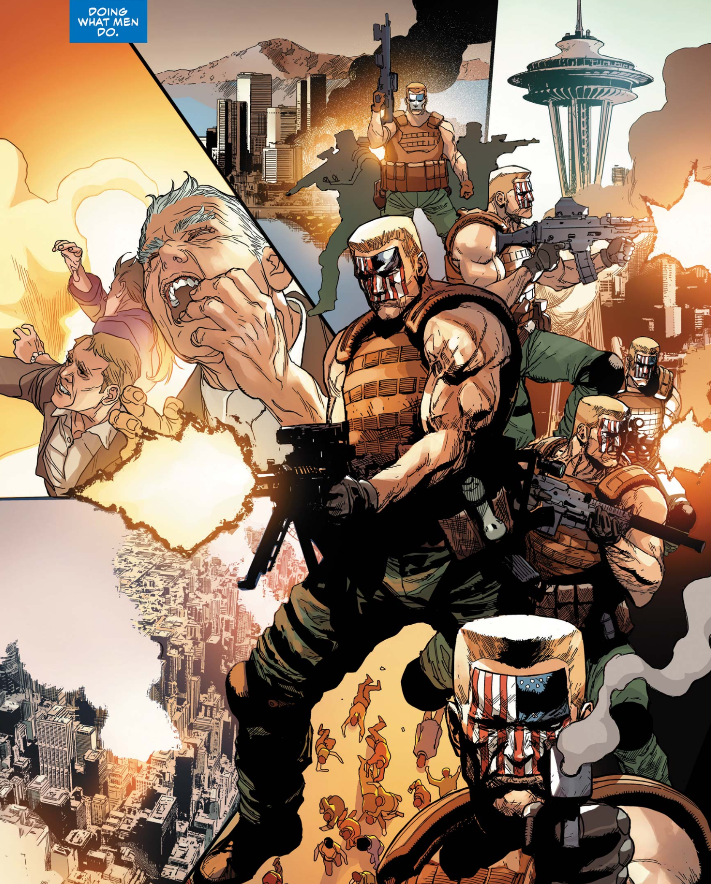
And of course there’s a familiar rogues gallery in Strucker’s underwater prison, made for gladiatorial sport, and the Watchdogs, who murdered U.S.Agent’s parents back in the day. Even Spencer’s Americops briefly make an appearance.
Best of all, Sharon Carter finally gets her due. And it’s well past time. Introduced right off in 1966 as spy and wilting love interest, Sharon was, unlike Jane Foster, a woman of action, but unlike Sif, she was eager to give up her career to be Cap’s lady. Years later she was seemingly killed off but returned in the mid-’90s over a decade later. Here, it was suggested that she’d been abandoned by S.H.I.E.L.D., suffered torture and sexual abuse, but escaped to become a mercenary, involving sex work as well as assassination. None of this was ever adequately addressed; Marvel went heavy with ’90s excess and salaciousness for her return story and then pulled back once the focus was squarely back on Cap. She fared better under Brubaker but was still mostly a tool of the (Skull’s) plot. And then abandoned in Arnim Zola’s Dimension Z she aged rapidly while raising Cap’s erstwhile foster son—who never made it out of Remender’s run.
Of course, it’d be nice to see more aging characters in superhero comics, but in this case, Sharon is yet again victim of an atrocity, and we don’t get to experience the aging with her. While Cap, too, had been aged—which suggested at first that they might get married—he was inevitably de-aged less than two years later. Sharon wouldn’t be restored for six years. And then Spencer grossly compromised her character as she was manipulated by Hydra Cap and then played only a minor role in the resistance against Hydra relative to other Marvel heroes. Obviously, she’ll only ever be one of Cap’s supporting cast. But why should that be obvious? At last, Coates gives her a heroic life without reference to Steve—the Daughters of Liberty.
And then she’s de-aged in with the help of Shuri’s magic as she defeats Selene. The glory of the moment, the felt sisterhood among the heroines, and Sharon’s considerable and joyous power-up are in stark contrast to Steve’s de-aging by a Red Skull-manipulated Kobik in 2016’s Assault on Pleasant Hill.
However, the threat Selene poses just isn’t as compelling as it could’ve been, especially compared to her apocalyptic portrayal in the 2009 X-Men event, Necrosha. But being far more powerful than Sharon, she does provide a very convincing threat for Sharon to triumph over—and through which she is persuasively transformed, rejuvenated and powered-up
Having kept track of what I found most compelling in each issue and now looking back, my favorite issues were the FCBD prologue, and then #13-14, and the last four issues—the best in terms of Cap’s narration paralleling the action most powerfully. But there are wonderful moments and sequences peppered throughout, especially Sharon’s rebirth, the history of the Daughters of Liberty, Sin’s gradual transformation under Alexa’s twisted tutelage, and artist Daniel Acuña’s surprise fill-in art for issue 24.
Read the whole run in one sitting if you haven’t already; do so again after that. You’ll find yourself returning to it as you look back at Cap’s classic runs and continue to follow his story and that of his allies and foes in these increasingly uncertain times—finding in the capacious heart and soul of Steve Rogers and friends something of a guiding light in a turbulent world.
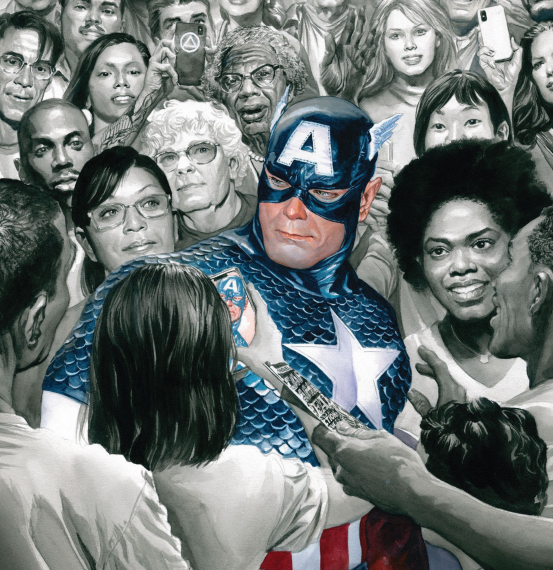


Your writeup was less a glowing review and breakdown of the fine writing than it was a soapbox condemnation of your hatred of conservative values. Personally I am a conservative, a reader of Cap since 1974, and I find a tremendous amount of the last decade of stories total drivel by those who simply don’t “get” Cap. Coates does, and to his credit, he does manage to keep the rather uneven continuity of Steve to a minimum, as well as the political narrative. It’s a good, not great, read, but infinitely better than Spencer.
What to one person is soapbox is to another honest interpretation of the text. And earnest criticism is not “hatred,” as you put it. You are not a victim here.
Fantastic piece David. Headed to read #1 right now.
Thank, Scott! Hope you enjoyed the run too.